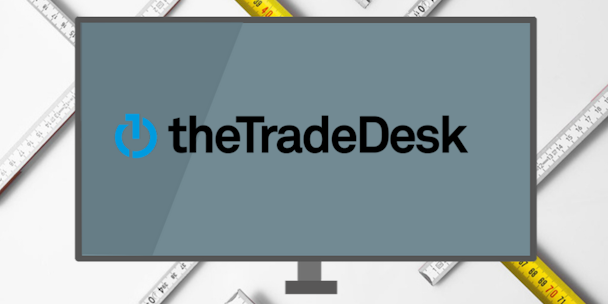The Trade Desk is gathering ACR data as it edges closer to measurement ‘holy grail’
The uptick in connected televisions means TV is now an online medium. That has advertisers picturing a future of data-enabled, cross-device targeting.

The Trade Desk is adding more real-time TV data to its platform
The Trade Desk, an independent demand-side platform (DSP), is now looking to partner with companies that provide automatic content recognition (ACR) data to realize that dream by connecting the previously siloed medium of TV with the rest of the digital ecosystem.
The Trade Desk announced today (8 October) it has struck a deal with Vizio-owned Inscape to include its viewing data from over 12m smart TVs into the DSP’s media planning tool. This builds on a similar announcement in May with Samba TV, an ACR company baked into more than a dozen manufacturers, including Sony, Sharp, TCL and Toshiba.
ACR technology gathers data on what opted-in TV viewers see, whether it’s delivered over-the-air or over-the-top (OTT). So now, if a consumer sees a program or an ad on a smart TV, a marketer can retarget that person across digital.
Ashutosh Gangwar, general manager of data partnerships at The Trade Desk, said adding ACR data allows the company to peer into TV, bolstering its planning tool.
“This data basically creates this unique opportunity for us to understand what the consumer is doing from a viewership behavior [standpoint] when they are not visible to The Trade Desk,” said Gangwar. “That's the understanding we're now bringing into our planning tools.”
Roku has developed a similar media planning tool for OTT as a way to help advertisers reach cord-cutters. It is also developing an ad measurement tool for all of OTT as it hopes to close the loop of TV attribution.
The Trade Desk has similar ambitions, but for across digital.
“Our goal is to give our advertisers a complete end-to-end planning, forecasting, targeting and measurement solution that works across screens,” said Gangwar.
He added that the company’s next step is to introduce a forecasting tool that will help advertisers optimize their spend in real-time.
“And then of course the holy grail is to build the measurement [tool] that actually proves whatever is forecasted and planned,” said Gangwar.
The Trade Desk is still in measurement development mode, so details are sparse, but Gangwar said the company is currently getting feedback from clients on how the measurement tool should look.
He added that The Trade Desk will likely develop its measurement tool with another company, such as Inscape or Samba, but would still take a “marketplace approach” in making third-party solutions available to clients who prefer certain currencies, such as Nielsen’s metrics.
The Trade Desk isn’t the only DSP looking to onboard more ACR data. In just the last year, Inscape has signed licensing deals with Dataxu, Mediamath and Amobee.
Greg Hampton, vice-president of business development at Inscape, said there’s increasing market demand as media buyers become more familiar with ACR data.
Hampton added that any company looking to deploy a holistic measurement offering will need a reliable device graph to connect the dots.
“You need to be able to tie devices together in order to know what ad impressions you're delivering across screens, and that's going to be requisite for being able to do multi-touch attribution,” said Hampton.
Last October, The Trade Desk formed an Identity Alliance with three other companies to create a scaled out device graph. Adding smart TV data to the mix provides an anchor point, as these immovable devices can be linked through an IP address to other devices that are harder to connect because consumers often carry them around, such as mobile phones, tablets and laptops.
Hampton said the only hole in ACR data is when a consumer watches content on apps such as Netflix, Amazon and Hulu when those apps are natively integrated into a smart TV.
So if a consumer is watching Hulu through a Roku stick, ACR can capture that; if it’s through the app running within LG's smart TV operating system, ACR cannot capture that viewing behavior.
“Everybody is blind to those three native apps because those companies contractually prohibit all the smart TV manufacturers from running ACR when those natives apps are running,” said Hampton.
